Celastrol, a triterpene, enhances TRAIL-induced apoptosis through the down-regulation of cell survival proteins and up-regulation of death receptors
- PMID: 20154087
- PMCID: PMC2857028
- DOI: 10.1074/jbc.M109.090209
Celastrol, a triterpene, enhances TRAIL-induced apoptosis through the down-regulation of cell survival proteins and up-regulation of death receptors
Retraction in
-
Celastrol, a triterpene, enhances TRAIL-induced apoptosis through the down-regulation of cell survival proteins and up-regulation of death receptors.J Biol Chem. 2016 Aug 5;291(32):16920. doi: 10.1074/jbc.A109.090209. J Biol Chem. 2016. PMID: 27496961 Free PMC article. No abstract available.
Abstract
Whether celastrol, a triterpene from traditional Chinese medicine, can modulate the anticancer effects of TRAIL, the cytokine that is currently in clinical trial, was investigated. As indicated by assays that measure plasma membrane integrity, phosphatidylserine exposure, mitochondrial activity, and activation of caspase-8, caspase-9, and caspase-3, celastrol potentiated the TRAIL-induced apoptosis in human breast cancer cells, and converted TRAIL-resistant cells to TRAIL-sensitive cells. When examined for its mechanism, we found that the triterpene down-regulated the expression of cell survival proteins including cFLIP, IAP-1, Bcl-2, Bcl-xL, survivin, and XIAP and up-regulated Bax expression. In addition, we found that celastrol induced the cell surface expression of both the TRAIL receptors DR4 and DR5. This increase in receptors was noted in a wide variety of cancer cells including breast, lung, colorectal, prostate, esophageal, and pancreatic cancer cells, and myeloid and leukemia cells. Gene silencing of the death receptor abolished the effect of celastrol on TRAIL-induced apoptosis. Induction of the death receptor by the triterpenoid was found to be p53-independent but required the induction of CAAT/enhancer-binding protein homologous protein (CHOP), inasmuch as gene silencing of CHOP abolished the induction of DR5 expression by celastrol and associated enhancement of TRAIL-induced apoptosis. We found that celastrol also induced reactive oxygen species (ROS) generation, and ROS sequestration inhibited celastrol-induced expression of CHOP and DR5, and consequent sensitization to TRAIL. Overall, our results demonstrate that celastrol can potentiate the apoptotic effects of TRAIL through down-regulation of cell survival proteins and up-regulation of death receptors via the ROS-mediated up-regulation of CHOP pathway.
Figures
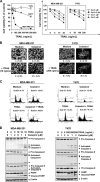

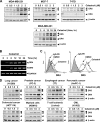
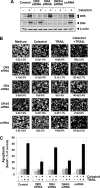
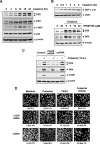
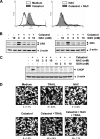
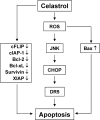
Similar articles
-
Celastrol enhances TRAIL-induced apoptosis in human glioblastoma via the death receptor pathway.Cancer Chemother Pharmacol. 2019 Oct;84(4):719-728. doi: 10.1007/s00280-019-03900-8. Epub 2019 Jul 8. Cancer Chemother Pharmacol. 2019. PMID: 31281953
-
Ursolic acid, a pentacyclin triterpene, potentiates TRAIL-induced apoptosis through p53-independent up-regulation of death receptors: evidence for the role of reactive oxygen species and JNK.J Biol Chem. 2011 Feb 18;286(7):5546-57. doi: 10.1074/jbc.M110.183699. Epub 2010 Dec 14. J Biol Chem. 2011. Retraction in: J Biol Chem. 2016 Aug 5;291(32):16924. doi: 10.1074/jbc.A110.183699. PMID: 21156789 Free PMC article. Retracted.
-
Gossypol induces death receptor-5 through activation of the ROS-ERK-CHOP pathway and sensitizes colon cancer cells to TRAIL.J Biol Chem. 2010 Nov 12;285(46):35418-27. doi: 10.1074/jbc.M110.172767. Epub 2010 Sep 13. J Biol Chem. 2010. Retraction in: J Biol Chem. 2016 Aug 5;291(32):16923. doi: 10.1074/jbc.A110.172767. PMID: 20837473 Free PMC article. Retracted.
-
Celastrol as an emerging anticancer agent: Current status, challenges and therapeutic strategies.Biomed Pharmacother. 2023 Jul;163:114882. doi: 10.1016/j.biopha.2023.114882. Epub 2023 May 15. Biomed Pharmacother. 2023. PMID: 37196541 Review.
-
Recent Trends in anti-tumor mechanisms and molecular targets of celastrol.Int J Biol Sci. 2024 Oct 7;20(14):5510-5530. doi: 10.7150/ijbs.99592. eCollection 2024. Int J Biol Sci. 2024. PMID: 39494324 Free PMC article. Review.
Cited by
-
Tumor necrosis factor-α sensitizes breast cancer cells to natural products with proteasome-inhibitory activity leading to apoptosis.PLoS One. 2014 Nov 24;9(11):e113783. doi: 10.1371/journal.pone.0113783. eCollection 2014. PLoS One. 2014. PMID: 25419573 Free PMC article.
-
Aldose reductase inhibition enhances TRAIL-induced human colon cancer cell apoptosis through AKT/FOXO3a-dependent upregulation of death receptors.Free Radic Biol Med. 2013 Oct;63:280-90. doi: 10.1016/j.freeradbiomed.2013.05.039. Epub 2013 May 31. Free Radic Biol Med. 2013. PMID: 23732517 Free PMC article.
-
Celastrol blocks interleukin-6 gene expression via downregulation of NF-κB in prostate carcinoma cells.PLoS One. 2014 Mar 24;9(3):e93151. doi: 10.1371/journal.pone.0093151. eCollection 2014. PLoS One. 2014. PMID: 24664372 Free PMC article.
-
Celastrol: A Spectrum of Treatment Opportunities in Chronic Diseases.Front Med (Lausanne). 2017 Jun 15;4:69. doi: 10.3389/fmed.2017.00069. eCollection 2017. Front Med (Lausanne). 2017. PMID: 28664158 Free PMC article. Review.
-
Celastrol increases osteosarcoma cell lysis by γδ T cells through up-regulation of death receptors.Oncotarget. 2016 Dec 20;7(51):84388-84397. doi: 10.18632/oncotarget.12756. Oncotarget. 2016. PMID: 27768597 Free PMC article.
References
-
- Wiley S. R., Schooley K., Smolak P. J., Din W. S., Huang C. P., Nicholl J. K., Sutherland G. R., Smith T. D., Rauch C., Smith C. A. (1995) Immunity 3, 673–682 - PubMed
-
- Pitti R. M., Marsters S. A., Ruppert S., Donahue C. J., Moore A., Ashkenazi A. (1996) J. Biol. Chem. 271, 12687–12690 - PubMed
-
- Bhardwaj A., Aggarwal B. B. (2003) J. Clin. Immunol. 23, 317–332 - PubMed
-
- Rowinsky E. K. (2005) J. Clin. Oncol. 23, 9394–9407 - PubMed
-
- Wagner K. W., Punnoose E. A., Januario T., Lawrence D. A., Pitti R. M., Lancaster K., Lee D., von Goetz M., Yee S. F., Totpal K., Huw L., Katta V., Cavet G., Hymowitz S. G., Amler L., Ashkenazi A. (2007) Nat. Med. 13, 1070–1077 - PubMed
Publication types
MeSH terms
Substances
Grants and funding
LinkOut - more resources
Full Text Sources
Other Literature Sources
Research Materials
Miscellaneous

